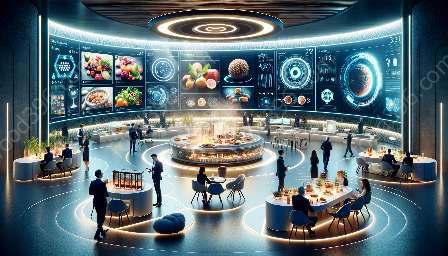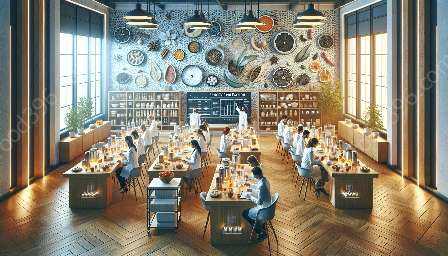Menu planning is a crucial aspect of the culinary industry, linked closely with the principles of culinology. It involves creating a detailed strategy for offering food and drink options that engage and satisfy customers. As an essential component of food and drink establishments, effective menu planning draws from the principles of both culinary arts and food science, enhancing the overall dining experience. This comprehensive guide will explore the intricacies of menu planning and its compatibility with culinology, providing valuable insights into this significant aspect of the food industry.
Understanding Menu Planning
Menu planning is the process of organizing and selecting dishes and beverages to be offered in a food establishment. It requires careful consideration of various elements, including customer preferences, dietary trends, nutritional value, cost-effective ingredient sourcing, and culinary innovation. A well-structured menu not only showcases the culinary expertise of the establishment but also reflects a deep understanding of consumer behavior and market demands.
The Role of Culinology
Culinology, as an emerging discipline, integrates culinary arts, food science, and food technology to create innovative and high-quality food products and experiences. In the context of menu planning, culinology offers invaluable insights into ingredient functionality, flavor and texture enhancement, and the development of new and unique menu items. This multidisciplinary approach benefits food and drink establishments by enabling them to differentiate their offerings, create signature dishes, and stay at the forefront of culinary trends.
Key Considerations in Menu Planning
- Consumer Preferences: Understanding the target audience and their preferences is fundamental in developing a successful menu. This includes considering cultural influences, regional tastes, and dietary requirements, ensuring that the menu resonates with a diverse customer base.
- Seasonal and Local Sourcing: Leveraging seasonal and local ingredients not only supports sustainability but also adds authenticity and freshness to the menu. It allows for the creation of seasonal menus that align with culinary trends and the availability of fresh produce.
- Nutritional Balance: Offering a variety of nutritious and well-balanced options is essential to cater to health-conscious clientele. Menu planning should prioritize nutritional value, offering choices that cater to different dietary needs without compromising on taste.
- Creative Menu Development: Incorporating creativity and innovation into menu items enhances the overall dining experience. This involves experimenting with unique flavor combinations, inventive presentations, and exploring new cooking techniques to captivate customers.
Optimizing the Menu Planning Process
To achieve success in menu planning, establishments can adopt various strategies that align with culinology principles:
- Menu Engineering: Analysing the profitability and popularity of menu items to strategically place high-margin and high-demand dishes for increased sales.
- Collaborative Approach: Involving chefs, culinary experts, and food scientists in the menu planning process fosters synergy between creativity and food technology, resulting in a well-rounded menu.
- Consumer Feedback: Regularly seeking feedback from patrons aids in refining the menu, ensuring that it remains relevant and appealing to the target audience.
- Menu Flexibility: Allowing for flexibility in the menu to accommodate changing trends and seasonal variations offers a dynamic dining experience and keeps customers curious and engaged.
The Impact of Menu Planning on the Food and Drink Industry
An effectively planned menu can have a profound impact on the success of food and drink establishments. It influences customer satisfaction, brand identity, and financial performance. By aligning menu planning with the principles of culinology, establishments can harness the benefits of consumer-centric innovation, sustainable sourcing, and culinary creativity, ultimately elevating the overall dining experience.
Conclusion
Menu planning is a multifaceted process that intertwines culinary expertise with consumer behavior insights and food science innovation. It plays a pivotal role in shaping the culinary landscape, allowing food and drink establishments to offer memorable dining experiences that cater to diverse preferences and dietary needs. By embracing culinology principles, menu planning can evolve into a dynamic and innovative process, resulting in menus that not only reflect culinary artistry but also resonate with modern consumer demands.




















